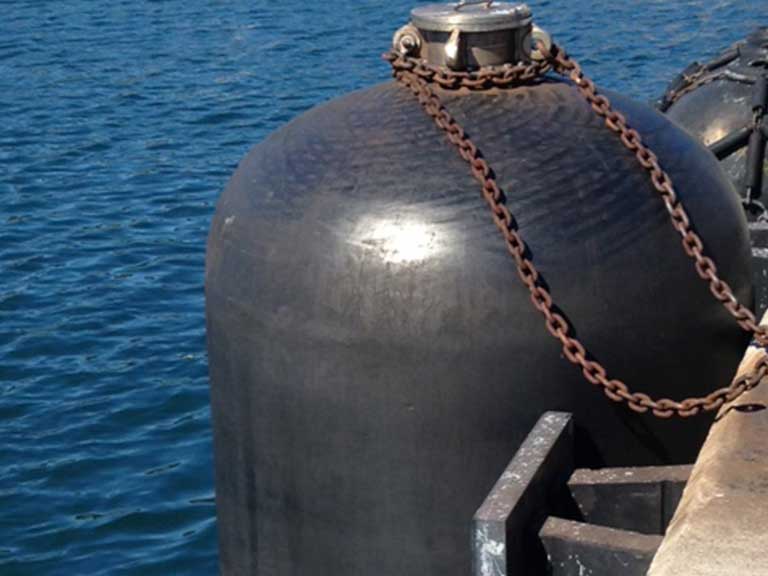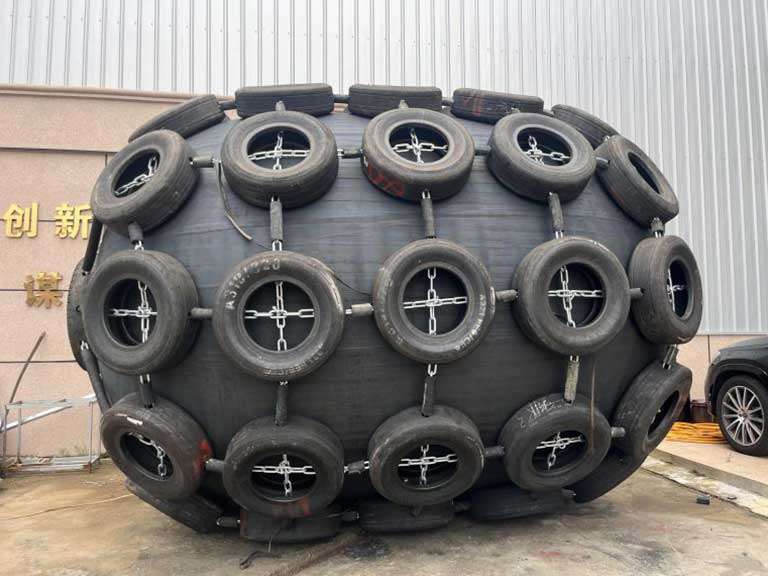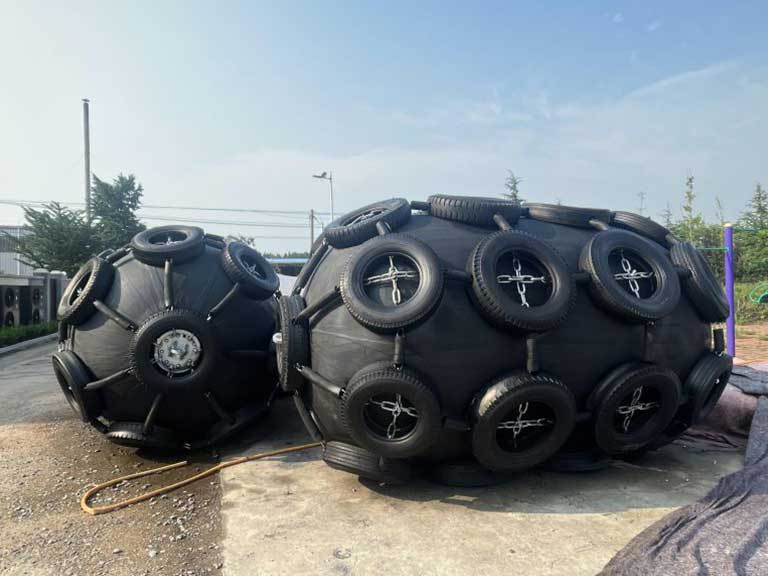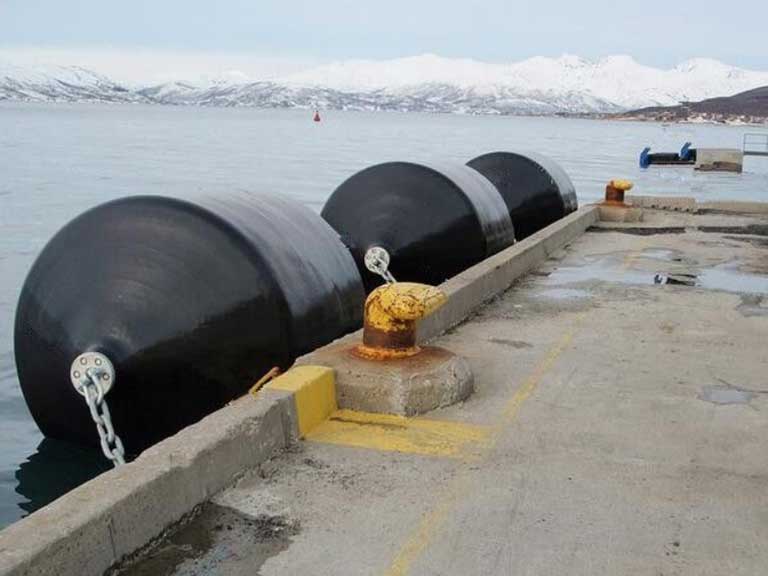When ships dock, marine rubber fenders take the shock, saving both the ships and the port facilities. But what makes sure they do a great job? The answer lies in strict testing methods that check how long they last and how well they handle different weather circumstances.
We will look at the whole process of fender performance testing, from basic aspects like compression testing to evaluating environmental resistance. This will give marine workers the information they need to make sure their fender systems meet industry standards.
Table of Contents
The Critical Role of Fender Performance Testing in Marine Safety
We know that fender testing is more than just a process. It’s an important part of keeping people safe at sea. Therefore, marine rubber fenders must be tested. This ensures that they function properly and are able to absorb the forces generated when ships dock. This helps to protect the safety of ships and port infrastructure.
You can’t say enough about how important it is to test boat shields for quality. It is very important to make sure that the ships, port facilities, and people are safe. Untested fenders may fail catastrophically during berthing. This can cause serious environmental damage and economic loss.
Quality Testing Matters: Quality testing makes sure that a hood can absorb contact energy, hold up against compression forces, and keep its shape in a variety of situations. At Henger Shipping Supplies, we understand that properly tested fenders last longer. This means better returns on investment for port officials and ship owners.
How Testing Prevents Costly Failures and Accidents: Fenders should be tested before being used in hazardous naval environments. This can reveal manufacturing defects, material defects, or design defects. This helps to avoid failure and huge losses. In addition, regular testing helps to detect whether the quality of the fenders has deteriorated over time. This helps to replace the fenders before they are severely damaged.
| Benefits of Fender Testing | Description | Impact on Marine Safety |
| Ensures Fender Durability | Fender testing system ensures fenders are durable and can absorb shock and vibrations without damage. | High |
| Prevents Costly Failures | Testing identifies defects or weaknesses before deployment, saving on repair and replacement costs. | Significant |
| Enhances Safety | A tested fender is less prone to accidents due to its reliable structure and performance. | Critical |

Understanding Marine Fender Systems
For sea safety, it is important to understand how complicated marine fender systems are. Marine fender systems are made to absorb the kinetic energy of a docking vessel. This lowers the chance that both the vessel and the docking structure will be damaged.
Types of Marine Fenders and Their Applications: There are different kinds of marine fender systems. These include Yokohama fenders, rubber fenders, and foam-filled fenders. Each type is made for a certain purpose and size of tank. As an example, Yokohama fenders are prized for their ability to absorb a lot of energy while having a low reaction force. This makes them perfect for activities between ships.
Key Performance Factors in Fender Systems: The fender system typically includes several important performance factors. These include its energy absorption capacity, reaction force, steering method, and service life after repeated compression. To choose the right fender system for a marine purpose, it is important to understand these factors.
Essential Equipment for Fender Performance Testing
To get accurate results, Fender performance testing needs to be done carefully with the right tools and at a spot that has been properly set up. We know that the quality of the testing setting and the tools used is a big part of how accurate the test results are.
Required Testing Tools and Machinery: In order to comprehensively test the performance of fenders, we need specialized tools. For example, compression testing machines, load cells, pressure monitors, and environmental modeling chambers. Pressure and temperature measuring tools are also among our main tools. They are necessary for getting performance numbers in a variety of settings.
Setting Up a Proper Testing Environment: A well-designed test area means providing a stable base for the test equipment. This ensures sufficient space to move the fenders and take safety measures for high-pressure testing. We carefully select the test location and choose a controlled setting. This helps to avoid high temperatures or variable environments that could affect the test results.

Compression Testing: The Foundation of Fender Evaluation
Compression testing is the most important part of evaluating fenders. This is because it shows how well they absorb energy and respond to forces. We use this method to test marine fenders. This allows us to understand their performance under different conditions and ensure that they can effectively protect ships and buildings. In addition, compression tests are designed to test the energy absorption capacity of marine fenders. This is critical to their intended use.
We need to make sure that the compression machine is set up correctly before we do this test. The fender must be held and compressed by this machine, and the amount of compression must be managed. The fender’s position inside the machine is very important. If it’s not in the right place, it can break even with a very light load.
Proper Compression Test Setup and Procedure
We have to carefully place the fender in the measuring machine in order to set up a compression test. The load is then slowly put on in a controlled way to make it feel like docking in the real world. In the test, important things are recorded, like the amount of energy absorbed, the reaction force, and the percentage of displacement.
- Precise positioning of the fender is required to avoid premature failure.
- The load application is controlled to simulate actual docking scenarios.
Interpreting Compression Test Results
To figure out what a compression test means, you have to compare the real performance curves to the manufacturer’s instructions and industry standards. Any differences could mean that there are problems with the design or the way it was made that need to be fixed.
- Comparing test results with industry standards verifies compliance.
- Deviations in test results can highlight potential issues with the fender.

Conducting Effective Shear Tests on Marine Fenders
Shear testing is an important part of figuring out how well naval bumpers work. This kind of testing checks how well a fender can handle the side forces that happen when a ship docks. Henger apply a controlled shear force to the fender using special tools while watching how it reacts and how strong its structure is.
Shear Testing Methodology and Best Practices: For shear testing, a linear force is applied to the fender using high-tech equipment. To properly simulate real-world situations, it is very important that the fender is placed correctly in the testing equipment. With our cutting-edge tools, we can precisely control the shear force’s direction and strength.
Analyzing Shear Force Resistance Data: Comparing test results to design standards is part of analyzing shear force resistance data. We can identify areas where fender performance may be substandard. This provides useful information for improving the product.
| Testing Parameter | Description | Importance |
| Shear Force Application | Force applied parallel to the fender | Evaluates fender’s ability to withstand lateral forces |
| Fender Positioning | Accurate placement in the testing apparatus | Ensures realistic simulation of real-world conditions |
| Data Collection | Measuring maximum shear force resistance and deformation points | Provides critical data for fender performance evaluation |

Weather Resistance and Environmental Testing
Marine fenders are exposed to many harsh external circumstances. So testing for weather protection is very important. We all know that marine fenders have to deal with harsh weather in the seas. For example, like salty water, changing temperatures, and UV rays. Environmental testing is done in a controlled room that mimics these hard conditions to make sure they will last.
Simulating Marine Environmental Conditions: Environmental testing rooms are made to be like the places where naval fenders are used. We can test fenders in controlled settings. These rooms have setups for UV exposure, temperature changes, and saltwater exposure.
Environmental Factor Testing: During tests, we look at how the fender reacts to different external factors. Changes in physical qualities like hardness, elasticity, and tensile strength are looked at both before and after contact. This helps figure out how long fenders will last in certain fitting spots.
Through these tests, we can ensure the durability of marine fenders. The same applies to ships operating around the world. The data help vessel owners plan maintenance and replacement times, which increases safety and lowers costs.
| Environmental Factor | Testing Method | Assessment Criteria |
| Saltwater Exposure | Salt Spray Testing | Corrosion Resistance, Rubber Degradation |
| UV Exposure | UV Resistance Testing | Premature Degradation, Material Cracking |
| Temperature Fluctuations | Temperature Cycling Tests | Performance Across Operating Temperatures |

Energy Absorption and Reaction Force Measurement
To make sure stopping is safe, you need to know how marine fenders absorb energy and respond to forces. Both reaction force and energy absorption are very important to how well shields work.
Energy absorption testing determines how much energy the fender can absorb when impacted. High-quality fenders can absorb more energy. This helps reduce the likelihood of damage to ships and dock structures.
Testing Energy Absorption Capabilities
Energy absorption testing is an important part of evaluating fenders. Because it shows how well they do their main job, which is to change the kinetic energy from the contact of the vessel into distortion energy.
We test the fender with special tools that hit it with controlled force and record how much energy is absorbed. The fender’s ability to recover energy during compression is tested as part of this process. This is an important part of how well it works.
- Energy absorption testing evaluates the fender’s capacity to convert kinetic energy into deformation energy.
- The testing process involves applying controlled impact forces and measuring the absorbed energy.
- Fenders must demonstrate appropriate energy absorption characteristics for different vessel sizes and berthing scenarios.
Measuring and Analyzing Reaction Forces
The reaction force measurement tells us how much counterforce the fender is putting out when it is compressed. This counterforce must be within the design limits to keep the vessel and berthing structure from getting damaged.
We use special tools to squeeze the hood and then measure the force that is applied when it goes back to its original shape. This information is very important for figuring out how well the hood works and making sure it meets the standards.
- Reaction force measurement assesses the counterforce generated by the fender during compression.
- The ideal fender demonstrates high energy absorption with relatively low reaction forces.
- Data analysis involves creating performance curves that plot energy absorption against deflection percentage.

Industry Standards and Compliance in Fender Performance Testing
The importance of adhering to industry standards in fender performance testing cannot be overstated. As a leading manufacturer, we ensure that our testing procedures comply with the latest industry guidelines.
PIANC, BS6349, and Other Relevant Standards
Organizations such as PIANC (The World Association for Waterborne Transport Infrastructure) and standards like BS6349 play a pivotal role in establishing a framework for consistent quality assessment in marine fender systems. Our products are designed, manufactured, and tested in accordance with these standards. These include PIANC2002, BS6349, EAU2012, EC3, DIN18800, BS5950, and AISC.
- PIANC guidelines have become the de facto international standard for fender performance verification.
- Compliance with these standards ensures that fenders meet minimum performance requirements for energy absorption, reaction force, durability, and safety factors.
Third-Party Verification and Certification Process
Third-party verification involves independent testing laboratories or certification bodies witnessing and validating the testing process. This ensures impartiality and adherence to standardized procedures.
- The certification process includes document review, witnessing of physical tests, verification of test equipment calibration, and final performance data analysis.
- Many port authorities and marine insurance companies require certified compliance with industry standards as a prerequisite for fender installation.
Conclusion
As we’ve discussed throughout this article, comprehensive fender testing is essential for optimal marine performance. Fender performance testing is a series of several tests that ensure the durability of marine fenders. The main tests include compression, shear, energy absorption, and weather resistance tests. All of which should be conducted in a controlled manner to guarantee accurate results.
Properly tested fenders offer numerous benefits. These include longer service life, reduced maintenance costs, and enhanced vessel safety. By investing in rigorous fender performance testing, maritime operators can protect valuable port infrastructure and ensure the safety of personnel and equipment. Henger emphasizes the importance of selecting fenders that meet or exceed industry standards for all marine applications.

FAQ
What is the importance of quality testing for marine fenders?
Quality testing is crucial to ensuring the durability and reliability of marine fenders. It plays a key role in preventing damage to ships and port infrastructure.
How do I choose the right type of marine fender for my vessel?
The choice of marine fender depends on various factors. These include the size and type of vessel, operating conditions, and berthing requirements. We consider these factors to recommend the most suitable fender system.
What is compression testing, and why is it essential for fender evaluation?
Compression testing is an important evaluation method. It is often used to evaluate the ability of fenders to withstand compressive forces. This provides insight into their energy absorption capabilities and overall durability.
How do industry standards, such as PIANC and BS6349, impact fender performance testing?
Industry standards like PIANC and BS6349 provide guidelines for fender design, testing, and installation. This ensures that fender systems meet specific safety and quality requirements. We adhere to these standards to guarantee compliance.
What is the role of third-party verification in fender performance testing?
Third-party verification involves independent testing and certification by accredited organizations, providing an added layer of assurance that our fender systems meet or exceed international standards.
How do environmental factors, such as salt, UV, and temperature fluctuations, affect marine fender durability?
Environmental factors can significantly impact fender durability. We simulate these conditions during testing to evaluate a fender’s resistance to degradation and ensure its long-term reliability.
Can you explain the significance of energy absorption and reaction force measurement in fender testing?
Energy absorption and reaction force measurements are key aspects of fender testing. This is because they help determine the ability of fenders to absorb and disperse the energy of berthing vessels. This can reduce the risk of damage to both the vessel and the fender.




